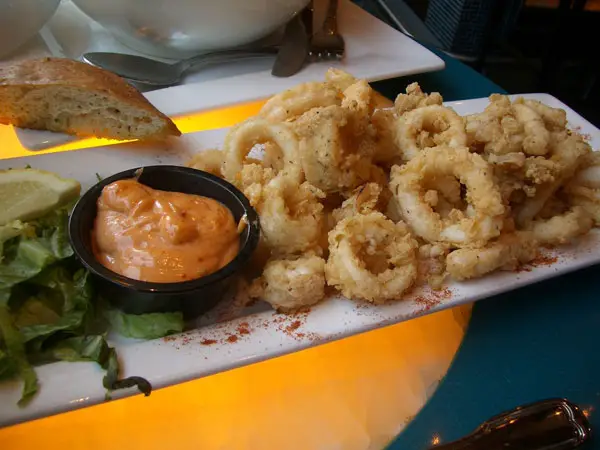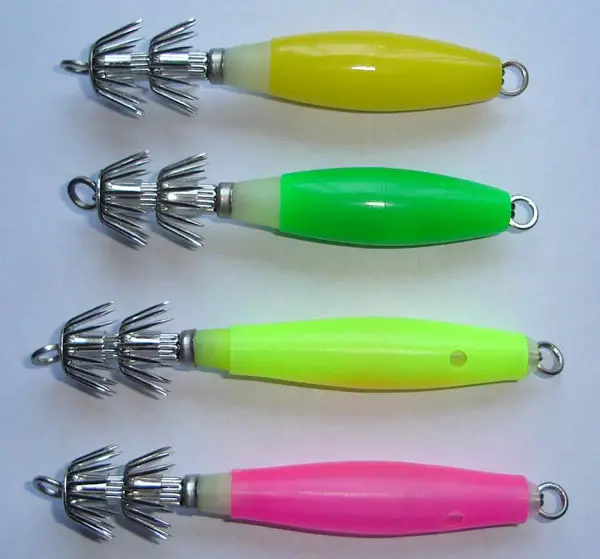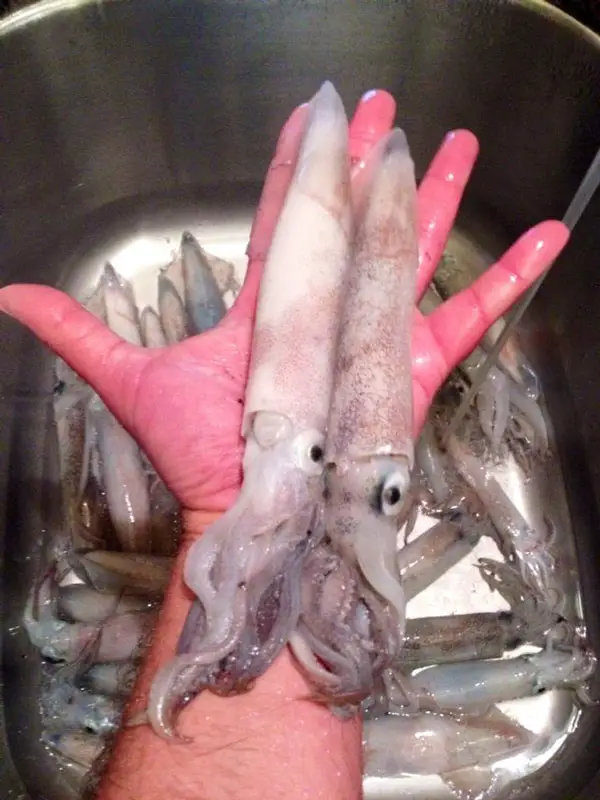Search
Latest Articles
Puget Sound Squiding
by Mike Carey, December 26, 2014
Let’s take a closer look at this fishery and what you’ll need to be a successful “squider”.
Squid are attracted to lights, which makes fishing for them at night the better option. That said, they can be caught during the day, and some squiders do quite well. The basic gear you need for catching squid are:
A spinning rod, medium action, length is a personal preference. I have seen successful squiders use from 6 to 10 foot long rods. We’ll discuss the actual technique a bit later. The reel can be loaded with 10-12 pound line. A squid doesn’t “fight”, once hooked it’s a matter of reeling it in.
Squid jigs. There are an amazing variety of jigs out there. You can buy locally; however, I have found great deals on squid jigs on Ebay. A lot of Ebay auctions are from China, Japan, and Hong Kong, where squid are a huge food source. I figure they should know something about what works best. Do yourself a favor and check it out. You can chose from plain Jane lures to glow in the dark and even LED flashing lures. Squid are attracted to light, so the theory is jigs that have light will work better. In my experience and observations of squiders I don’t know that this is necessarily true. That said, I also believe in using every edge available to increase my odds of success. Speaking of, lets break down some set ups and techniques.
First off, when you “squid” you are jigging. Fishing off of piers, you’ll be casting out, not far, maybe 20-30 feet maximum. You’ll then jig and reel your lure back to you. There’s lots of variation and I recommend watching those around you. When someone starts catching squid, observe their techniques. Some will have long sweeping action with their rods, others will do small twitches. Some will do a steady cadence, others will do long pauses. For the inexperienced squider it can be maddening to watch this and try to figure out what works best. My advice is mix it up and see what works, then stay with that until it doesn’t work.
Your set up can vary as well. You’ll see one, two, and three jigs tied in line, every 12-24”. Check regs for specific rules. One thing I do recommend is that the bottom jig be tied on with a lighter weight of line, that way, if your last jig snags the bottom you can break it off and bring the other jigs back in, instead of losing all your jigs. Another trick I’ve learned from watching the pros at the piers is to slide a large corky on your line. This isn’t as a strike indicator, rather, it’s purpose is to better observe just where your line is in the dark. You’ll see the corky floating on the surface of the water as you slowly jig your lures back to you.
As noted earlier, squid are primarily nocturnal feeders, although they can be caught in daylight. They are going after small bait fish and other creatures swimming around. The jig imitates the flash of a bait fish, which is why something with flash or glow works better. The squid are also attracted to the lights of the fishing piers in Puget Sound, which also attract the bait fish after dark. So light is good. Try to set up around a light pole, or better yet, bring your own light to attract the squid.
What does it feel like to hook a squid? Well, unlike a fish, squid don’t put up a fight. They do, however, feel heavy on your line, and that is what you’ll notice the first time you hook one. And by the way, I use the word “hook” loosely. Squid jigs don’t have hooks; they have a circular series 16-24 of needle sharp points that the squid become stuck on when they attack your jig. Because there are no barbs, when you feel the weight of a squid it’s important to keep reeling and allow no slack. When you hoist the squid up over the railing, simple take hold of your jig and turn it upside down, giving it a little shake. The squid will fall off into your bucket. Two things to watch out for though – squid squirt ink. So line your bucket with a plastic bag and by ready to duck. Second, squid have beaks located inside the center of the ring of tentacles. Et your finger in that area and your may well get bit, not pleasant.
At the beginning of this article I talked about the cultural diversity and sense of community that I enjoy so much. There’s something about standing out at night on a cold fishing pier that creates a sense of fishing fellowship. Hearing the different languages and excitement in the squider's voices when they catch a squid is infectious. You’ll find another interesting thing happens when you start catching squid. Your fellow squiders are not shy about moving over and fishing around you. Now, if you were steelheading this would be considered at the least rude, and at worst a reason to come to blows. But in the squiding community it’s considered normal behavior. The reason for this is that squid tend to swim around in schools and where one is caught there can be more in the area. So when anglers see squid being caught in an area they will converge on that spot and fish it until it slows down, and then move to the next hot location.
Here are a few more odds and ends to consider in your quest for fresh calamari. High tides tend to be the best tides to squid. Cloudy or rainy nights can be better. My squiding buddy Robbie says in his experience cold evenings are better. Be sure to dress in layers, bring a portable heater if you’d like. It gets really cold standing and jigging and you will feel it in your bones.
While it’s not the same as fighting a ten pound steelhead, catching squid is an enjoyable and relaxing way to spend an evening. You’ll meet some friendly folks and with any luck come home with a tasty treat of fresh calamari. Fry your catch in olive oil, salt, and garlic and be prepared for one of Puget Sound’s finer delicacies.



